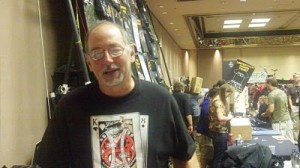[This is a much longer, wonkier version of a post I did on the Public Knowledge blog, for those who can’t get enough explanation of Section 325.]
I feel a good deal of sympathy for FCC Chairman Julius Genachowski over the ongoing fight between Fox and Cablevision. My brother the educator likes to say that “responsibility without authority is trauma.” Or, in other words, if you are responsible for something, but don’t actually have the authority to do anything about it, then the only thing you can do is suffer when things go wrong. So it is for Genachowski and Fox/Cablevision — under the FCC’s current rules. But here’s the funny thing. The FCC actually has fairly strong statutory authority to take action. So while Genachowski is in a bind, he can actually fix the problem. He even has a vehicle all teed up and waiting in the form of Public Knowledge’s Petition to change the “retransmission consent” rules (I’ll explain what those are below).
So how on Earth did the FCC get reduced from the “cop on the beat” to pathetically tweeting the playoffs? The answer lies with over 15 years of deliberately learned helplessness and rulemaking that I can only charitably describe as auto-castration. Twice, in 1992 and 1999, Congress explicitly directed the FCC to make sure that broadcasters don’t abuse the retransmission consent negotiation process (or as we telecom policy wonks like to call it, “retrans”). Each time, the FCC went out of its way to develop rules that systemically divested itself of all capability to act. So although Congress gave the FCC the job of consumer protection cop, the FCC kept angling for the job of “palace eunuch” to the Media Barons. For 15 years, the FCC has loooooovvvved its job as Palace Eunuch for the Media Barons, wearing a very impressive Palace Eunuch uniform with those great big baggy pants and the cute little fez and toy sword it waves impressively when it tells members of the public to move along and stop trying to hold big media companies accountable for their public interest obligations.
Happily for Genachowski, he can trade in the silly, baggy Eunuch pants for bold, powerful “man pants” the Republican women keep talking about as the fashion accessory for the season. Or Genachowski could do nothing, which will give him time to go shopping for a nice pair of those little pointy shoes with the bells on the toes to go with the baggy Eunuch pants.
Wonky legal details below . . . .




